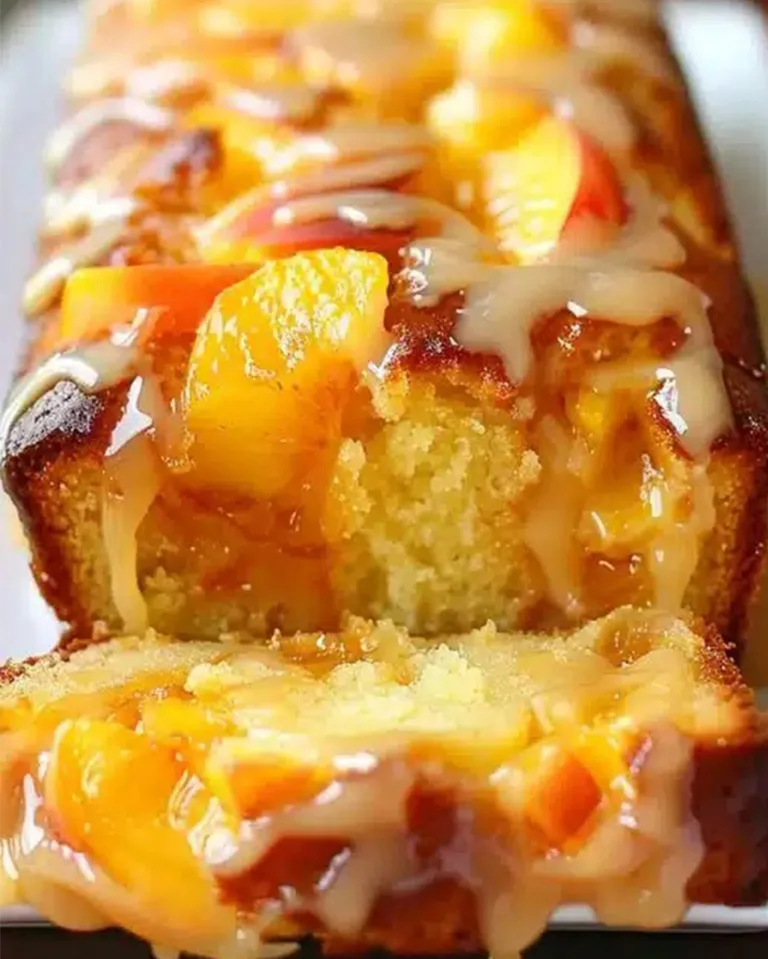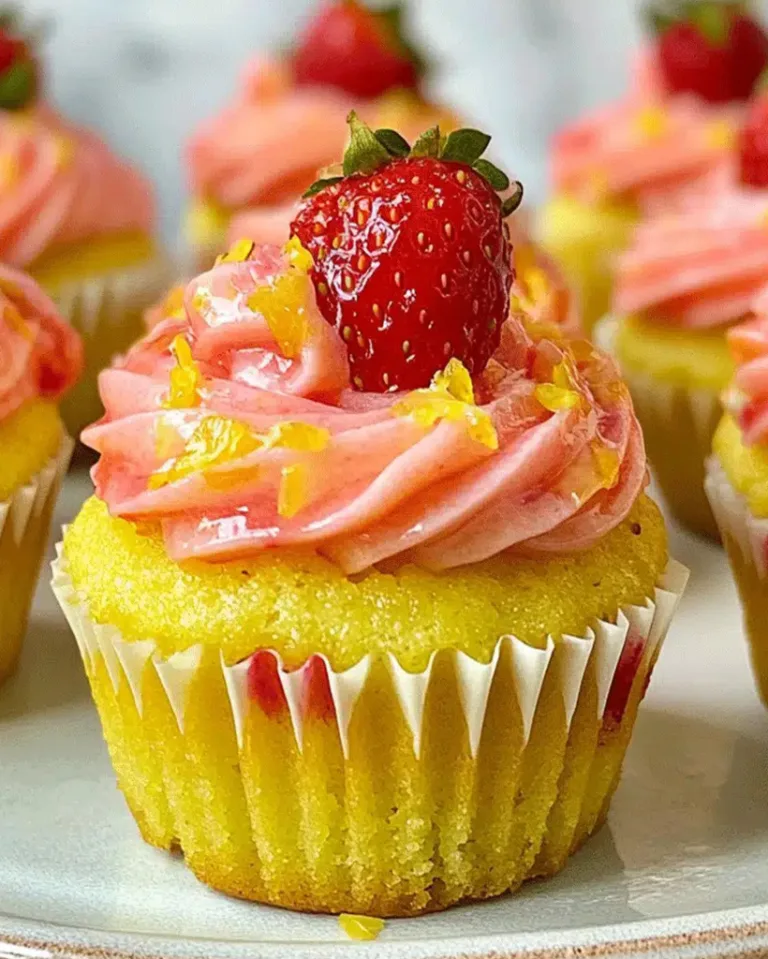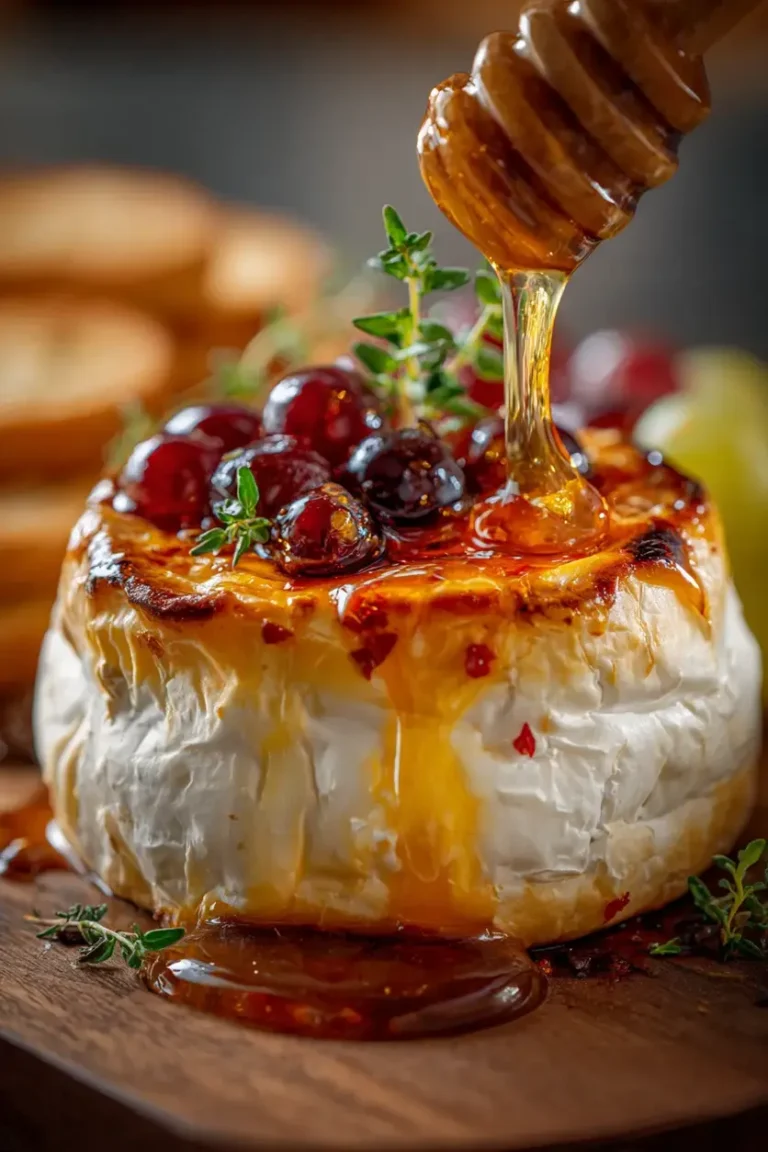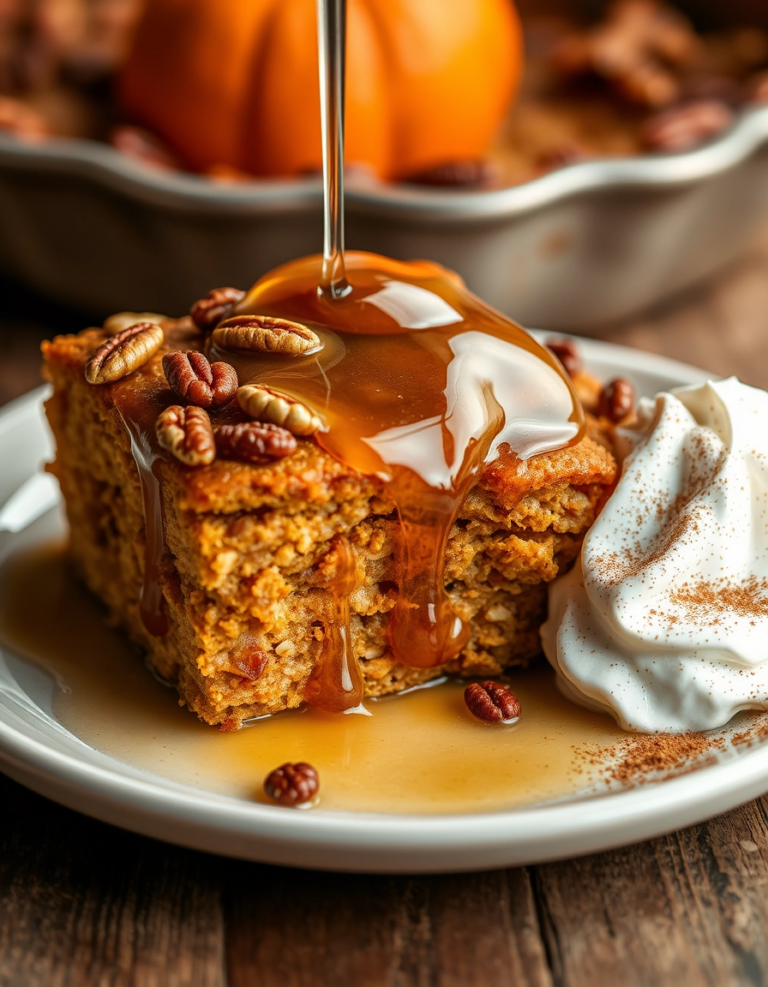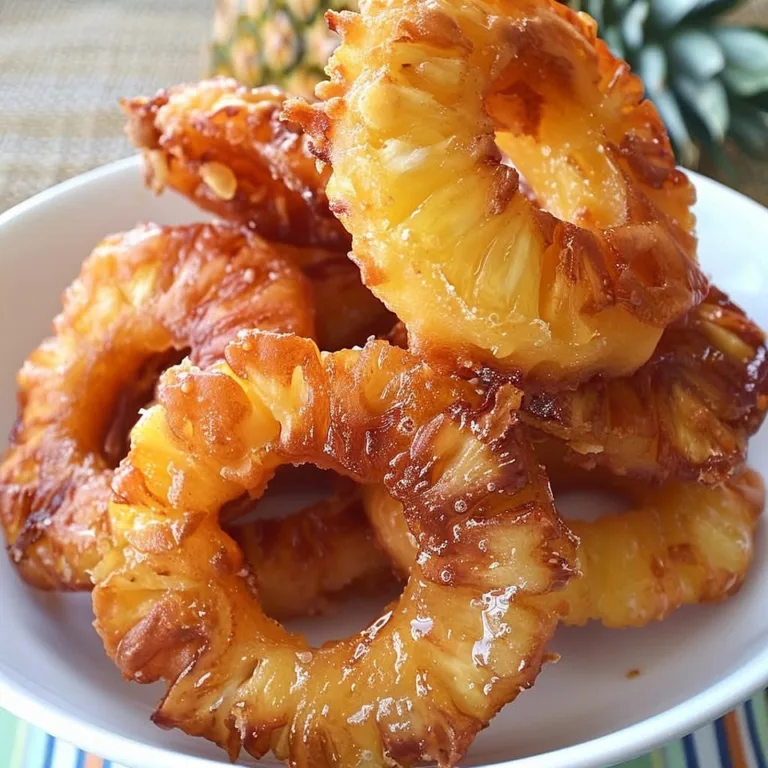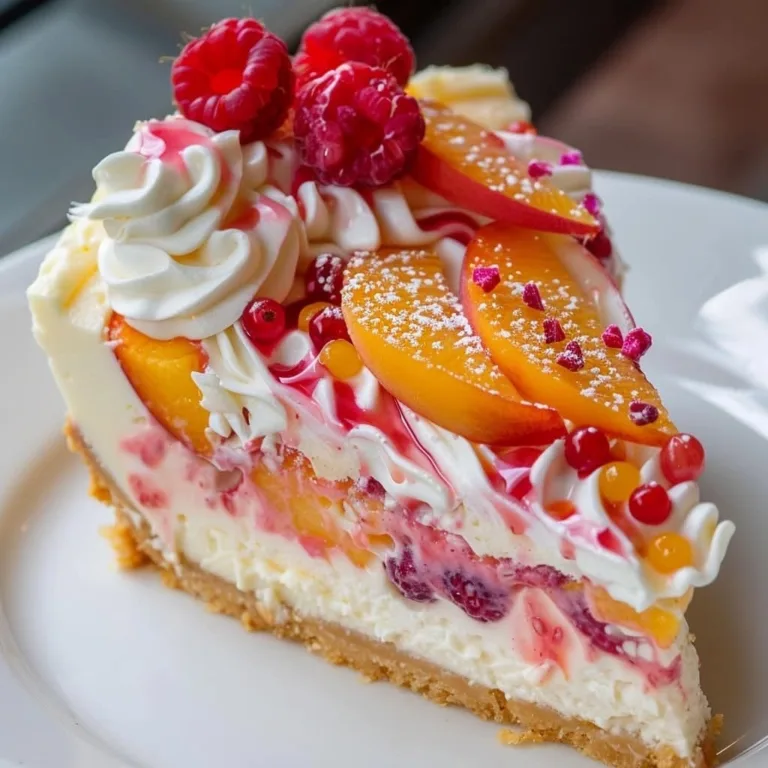Pineapple Upside-Down Cake
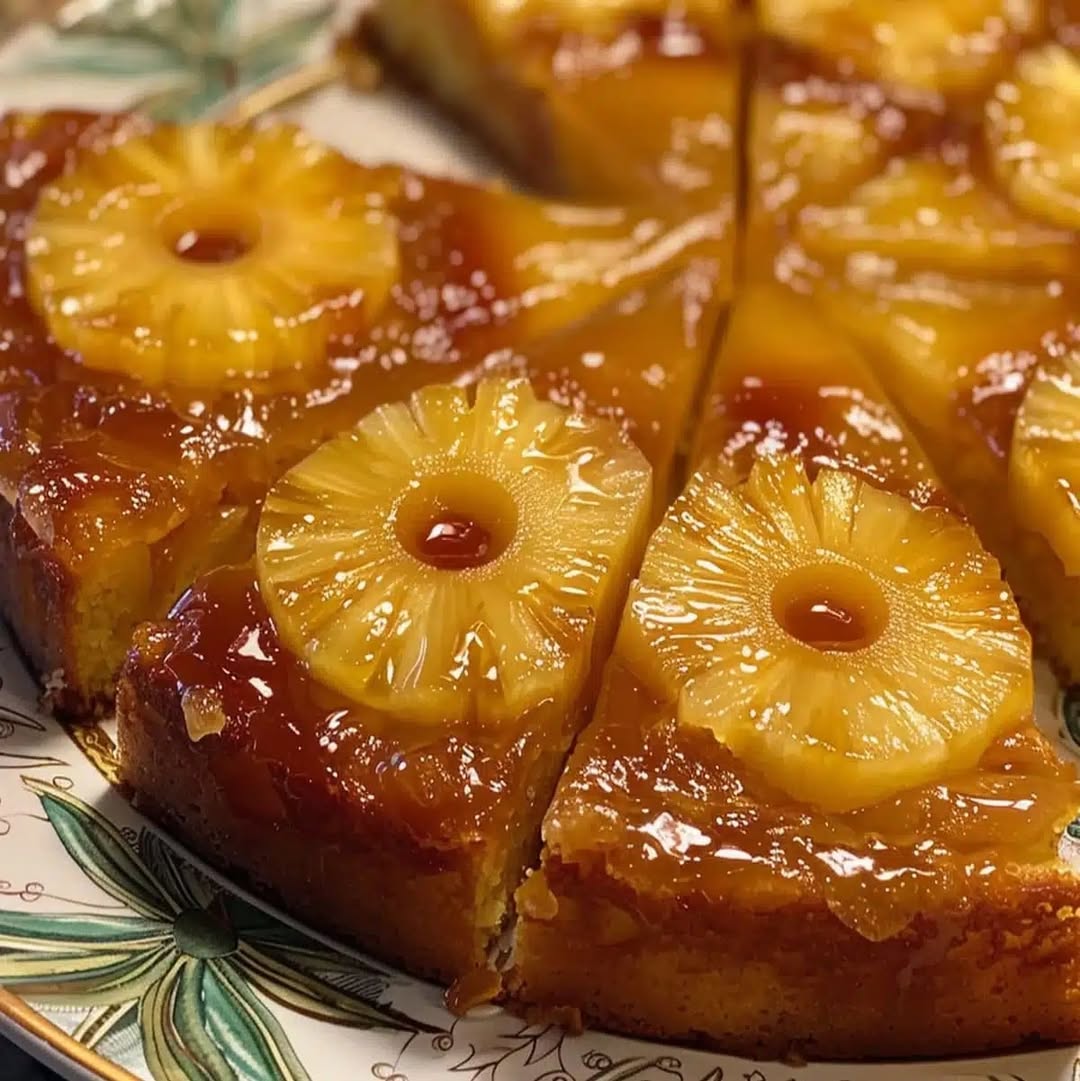
Introduction
There’s something magical about the first bite of Pineapple Upside-Down Cake—the caramelized pineapple rings, the buttery brown sugar glaze, and the fluffy cake that soaks up all that golden goodness. Whether you’re reminiscing about grandma’s kitchen or discovering this classic dessert for the first time, this recipe promises nostalgia and comfort in every slice. Best of all, it’s easier to make than you might think, and the stunning presentation makes it perfect for celebrations or just brightening an ordinary day.
About Pineapple Upside-Down Cake
Pineapple Upside-Down Cake is a timeless American dessert that combines juicy pineapple, maraschino cherries, and a tender vanilla cake baked in a caramel-like glaze. Originating in the early 20th century, this retro treat gained fame for its simplicity and eye-catching appeal. Unlike fussy desserts, it requires no fancy decorating—just flip the pan, and you’ve got a showstopper. The contrast of sweet fruit and moist cake makes it a crowd-pleaser, whether served warm with ice cream or enjoyed as an afternoon snack. Plus, it’s a fantastic way to use pantry staples, much like our easy banana bread.
This recipe fits perfectly with our blog’s mission to deliver approachable, joy-filled baking. While some desserts trend and fade, Pineapple Upside-Down Cake endures because it delivers both flavor and nostalgia. If you love classic bakes, you’ll also appreciate our vanilla cupcakes, which share the same timeless charm. Whether you’re a beginner or a seasoned baker, this cake invites creativity—swap pineapple for peaches, add coconut to the batter, or drizzle with rum for a grown-up twist. No matter how you customize it, the result is always unforgettable.
Why I Love This Recipe
Pineapple Upside-Down Cake holds a special place in my heart because it was the first dessert I ever baked with my mom. I remember standing on a step stool, carefully arranging pineapple rings while she explained how the sugar would transform into a glossy glaze. Now, every time I make it, the scent of caramelizing fruit takes me back to those messy, joyful moments in her kitchen. It’s more than just a cake—it’s a reminder that baking connects us to memories, people, and the simple pleasure of sharing something sweet.
Health and Nutrition
Why it’s good for your body
Pineapple Upside-Down Cake offers surprising health benefits alongside its delicious flavor. First, pineapple provides a hefty dose of vitamin C, which boosts immunity and supports skin health. Additionally, the fruit contains bromelain, an enzyme that aids digestion and reduces inflammation. While the cake includes sugar, you can balance it by using whole-grain flour or natural sweeteners for a healthier twist.
Moreover, Pineapple Upside-Down Cake delivers small amounts of manganese and fiber from the pineapple, which help regulate metabolism and promote gut health. The caramelized topping, when made with minimal butter, adds richness without excessive fat. For a nutrient boost, consider adding nuts or seeds to the batter. Finally, enjoying Pineapple Upside-Down Cake in moderation satisfies cravings while providing some nutritional value.
Transitioning to mindful eating, this dessert pairs well with protein-rich meals to stabilize blood sugar. Its tropical flavors also make it a refreshing alternative to heavier treats. Whether you bake it for a special occasion or a weekend treat, Pineapple Upside-Down Cake brings both joy and subtle health perks to your table.
How it fits in a healthy lifestyle
Pineapple Upside-Down Cake can fit into a balanced diet with smart tweaks. For gluten-free diets, swap regular flour for almond or oat flour. If you’re watching sugar intake, reduce the sweetener or use ripe pineapple for natural sweetness. Pairing a small slice with a protein source, like Greek yogurt, keeps energy levels steady.
For heart-healthy choices, use olive oil instead of butter and top with fresh berries. This dessert also works well in a flexible eating plan, where occasional indulgences are part of long-term wellness. Check out our gluten-free baking guide for more adaptations. If you love fruity desserts, explore our healthy snack swaps to keep meals exciting and nutritious. With mindful portions and creative adjustments, Pineapple Upside-Down Cake becomes a guilt-free pleasure.
PrintPineapple Upside-Down Cake
A classic dessert featuring caramelized pineapple and cherries on top of a moist vanilla cake.
Ingredients
For the Crust:
- 1/4 cup unsalted butter
- 3/4 cup packed brown sugar
- 1 can (20 oz) pineapple slices, drained
- Maraschino cherries, for garnish
- 1 1/2 cups all-purpose flour
- 1 1/2 tsp baking powder
- 1/4 tsp salt
- 1/2 cup unsalted butter, softened
- 3/4 cup granulated sugar
- 2 large eggs
- 1 tsp vanilla extract
- 1/2 cup whole milk
Instructions
1. Prepare the Crust:
- Preheat oven to 350°F (175°C). Melt 1/4 cup butter in a 9-inch round cake pan. Sprinkle brown sugar evenly over melted butter.
- Arrange pineapple slices in a single layer over sugar mixture. Place a cherry in the center of each pineapple ring.
- In a bowl, whisk flour, baking powder, and salt. In another bowl, beat 1/2 cup butter and granulated sugar until fluffy. Add eggs one at a time, then vanilla.
- Alternately add flour mixture and milk to butter mixture, beginning and ending with flour. Spread batter evenly over pineapple layer.
- Bake for 35-40 minutes until golden and a toothpick comes out clean. Cool 5 minutes, then invert onto serving plate.
Notes
You can customize the seasonings to taste.
How to Prepare This Dish
Steps and time-saving tips
Start by preheating your oven to 350°F to ensure it reaches the right temperature while you prepare the Pineapple Upside-Down Cake. Lightly grease a 9-inch round cake pan, then melt butter in a small saucepan. Drizzle the melted butter evenly over the bottom of the pan, and sprinkle brown sugar on top. Arrange pineapple slices in a single layer, placing maraschino cherries in the centers for a classic touch. In a large bowl, whisk together flour, baking powder, and salt for the cake batter. In another bowl, beat softened butter and granulated sugar until fluffy, then mix in eggs one at a time. Alternate adding the dry ingredients and milk, stirring just until combined. Carefully pour the batter over the pineapple layer, smoothing it with a spatula. Bake for 40-45 minutes until golden and a toothpick comes out clean. Let the cake cool for 10 minutes before inverting it onto a serving plate. For a time-saving tip, use canned pineapple rings and pre-measured dry ingredients to streamline the process.
Mistakes I’ve made and learned from
When I first made Pineapple Upside-Down Cake, I rushed the cooling step and flipped it too soon—resulting in a crumbled mess. Now, I always wait at least 10 minutes to let the caramelized layer set. Another mistake? Overmixing the batter, which made the cake dense instead of light. I learned to gently fold the dry ingredients into the wet ones, just until no streaks remain. If you’re new to baking, my guide on common cake mistakes can help you avoid these pitfalls. Also, if your caramelized topping sticks to the pan, try lining it with parchment paper first—a trick I picked up from this caramelization guide. Trust me, patience and a few small adjustments make all the difference.

Cultural Connection and Variations
Where this recipe comes from
Pineapple Upside-Down Cake carries a sweet slice of nostalgia, tracing its roots back to early 20th-century America. Home cooks loved how canned pineapple—once a luxury—turned into a showstopping dessert. The cake became a staple at potlucks and family gatherings, with its golden caramelized fruit topping stealing the spotlight. Interestingly, some historians link it to skillet cakes from the 1800s, where fruit and batter baked together in cast iron.
Around the world, variations pop up like surprises. In the Caribbean, cooks might add rum-soaked cherries or coconut flakes for a tropical twist. Meanwhile, in the American South, some families swap pineapple for peaches or pecans, making it a seasonal treat. My grandma always added a dash of cinnamon to hers, claiming it “warmed the soul.” Whether you stick to the classic or experiment, Pineapple Upside-Down Cake remains a canvas for creativity.
How it fits in today’s cooking
Today, Pineapple Upside-Down Cake still shines as a comfort food favorite. Modern bakers embrace it for its simplicity and retro charm, often sharing it at summer barbecues or holiday feasts. Some even give it a health-conscious spin, like using coconut sugar or gluten-free flour—proof that tradition adapts. For a quick weeknight dessert, try pairing it with a scoop of homemade vanilla ice cream to balance the caramelized sweetness.
Its versatility keeps it relevant. Busy parents might bake mini versions in muffin tins for lunchboxes, while food bloggers dress it up with edible flowers for Instagram-worthy shots. Craving more inspiration? Check out our guide to easy cake decorating to make your next Pineapple Upside-Down Cake even more special. Whether you’re honoring family recipes or reinventing them, this cake proves some flavors never go out of style.
Taste and Texture
What makes it delicious
Pineapple Upside-Down Cake delivers a symphony of sweet and tangy flavors with every bite. The caramelized pineapple rings melt into a buttery brown sugar glaze, creating a sticky, golden topping that contrasts beautifully with the fluffy vanilla cake beneath. Juicy pineapple bursts with tropical brightness, while maraschino cherries add pops of vibrant color and subtle almond-like depth. As you slice into it, the tender crumb gives way to a slightly crisp edge, making each forkful a perfect balance of soft and chewy. Warm from the oven, the cake fills the kitchen with a rich, caramelized aroma that hints at the decadence to come. Whether served warm or at room temperature, Pineapple Upside-Down Cake remains irresistibly moist and fragrant.
Boosting the flavor
Elevate your Pineapple Upside-Down Cake with a few easy tweaks. For a deeper caramel flavor, swap white sugar for dark brown sugar in the glaze, or add a splash of rum or vanilla extract to the batter. Toasted coconut flakes sprinkled over the top lend a nutty crunch, while a drizzle of homemade caramel sauce amplifies the dessert’s richness. If you love spice, a pinch of cinnamon or nutmeg in the batter complements the pineapple’s natural sweetness. For a showstopping finish, pair each slice with a scoop of vanilla bean ice cream, letting it melt into the warm cake for an extra layer of indulgence.
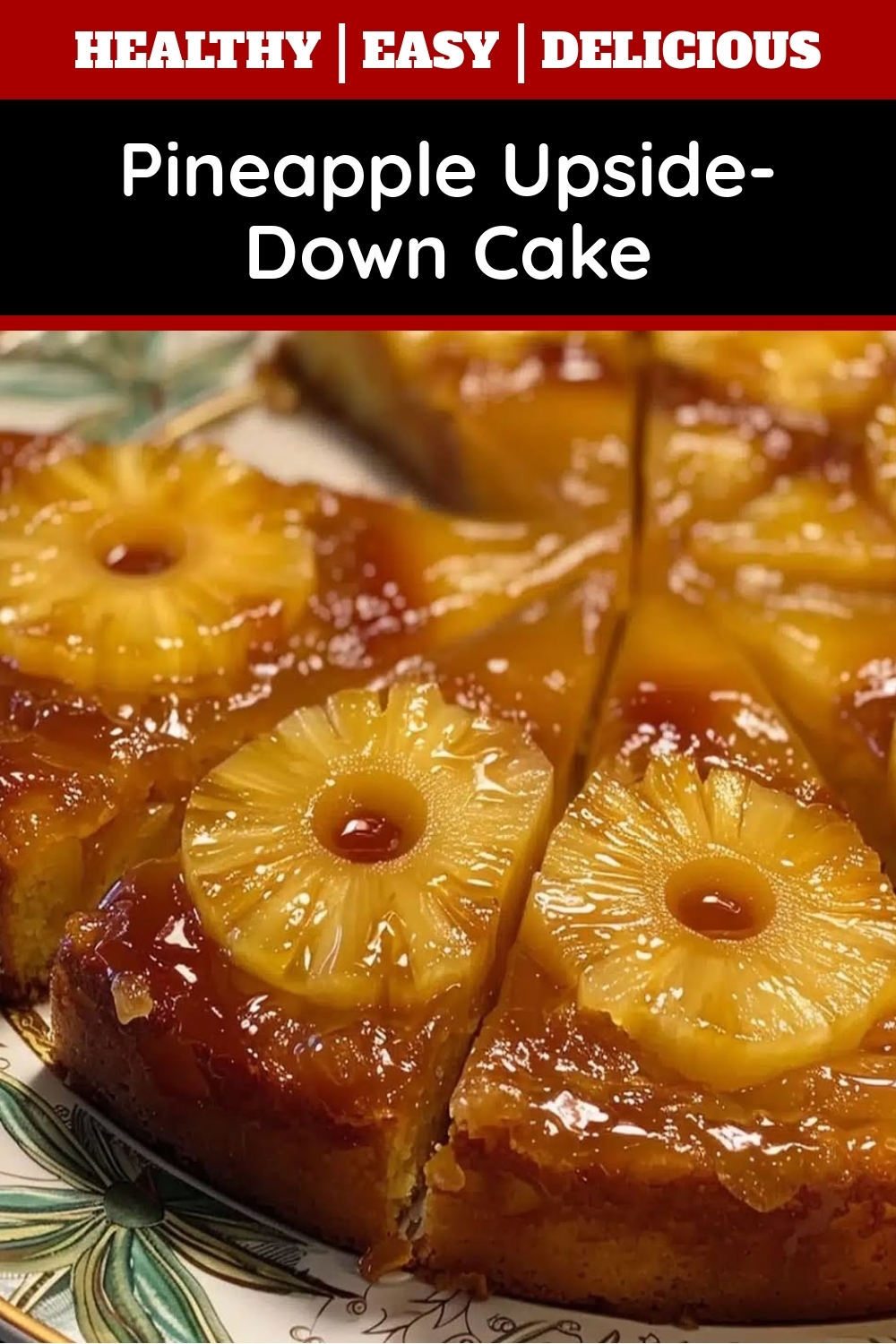
Tips for Success
Best practices for results
Always preheat your oven before baking Pineapple Upside-Down Cake to ensure even cooking. For the best caramelization, arrange pineapple rings in a single layer and press them gently into the brown sugar mixture. Additionally, use room-temperature butter for the batter to create a smooth, lump-free texture. Finally, let the cake cool for 10 minutes before inverting it onto a plate—this helps the topping set perfectly.
Mistakes to avoid
Avoid overmixing the batter, as this can make your Pineapple Upside-Down Cake dense instead of light and fluffy. Instead, fold ingredients just until combined. Another common mistake is skipping the parchment paper lining, which can cause sticking. For more baking tips, check out our guide on perfect cake textures. Also, don’t rush the cooling step—flipping the cake too soon can cause the topping to slide off. Learn how to troubleshoot cake issues with our common baking mistakes article.
Serving and Pairing Suggestions
How to serve this dish
Serve Pineapple Upside-Down Cake warm for the best flavor and texture. For a stunning presentation, place a slice on a vintage cake stand and drizzle caramel sauce over the top. Alternatively, garnish each plate with a sprig of fresh mint or a dollop of whipped cream to enhance the tropical vibe. This cake shines at summer barbecues, holiday gatherings, or even as a sweet finish to brunch. If you want to impress guests, pair it with a scoop of vanilla ice cream for a delightful contrast of temperatures.
What goes well with it
Pineapple Upside-Down Cake pairs beautifully with a creamy coconut whipped cream, which echoes its tropical flavors. For a refreshing drink, try it with a glass of iced hibiscus tea—the tartness balances the cake’s sweetness. If you love fruity desserts, consider serving it alongside our Berry Chia Pudding for a light yet satisfying combo. Coffee lovers will appreciate how a bold espresso cuts through the richness, especially when paired with our Homemade Vanilla Latte for a cozy treat.
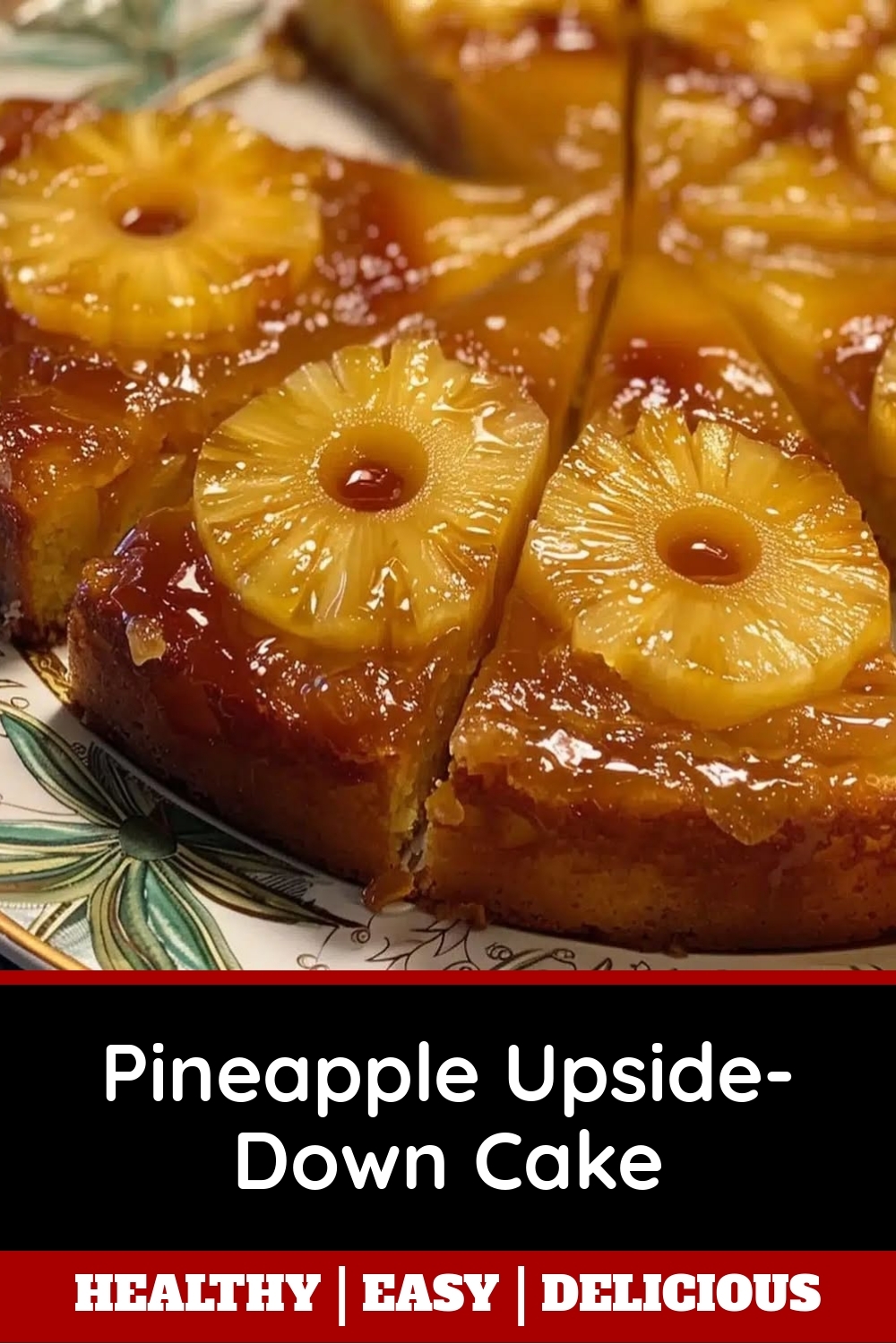
Pineapple Upside-Down Cake became popular in the early 1900s after canned pineapple was introduced in the U.S. The cake’s signature caramelized fruit topping and fluffy base made it a hit at bake sales and family gatherings. Today, it remains a classic American dessert.
Yes, fresh pineapple works but requires extra prep. Unlike canned pineapple, fresh fruit contains enzymes that can break down the cake’s texture. Lightly cooking the fresh pineapple first or briefly microwaving it helps neutralize these enzymes for perfect Pineapple Upside-Down Cake.
Sticking usually happens if the caramel layer cools too much before flipping. For best results, let your Pineapple Upside-Down Cake rest just 2-3 minutes after baking, then invert it onto a plate while still warm. Always grease the pan thoroughly and use parchment paper for extra insurance.
Store Pineapple Upside-Down Cake covered at room temperature for up to 2 days, or refrigerate for up to 5 days. Place wax paper against the cut sides to prevent drying. The cake’s caramel topping naturally helps retain moisture, making it stay fresher longer than many desserts.

